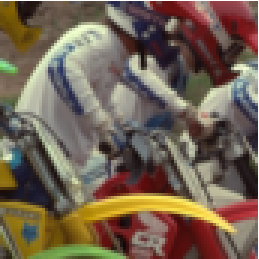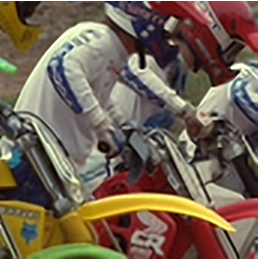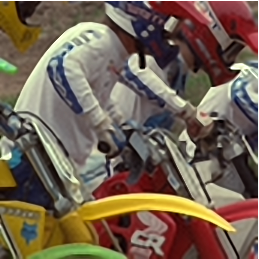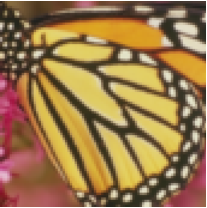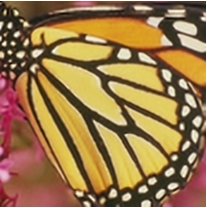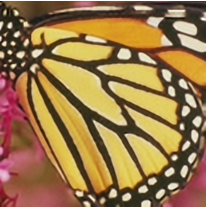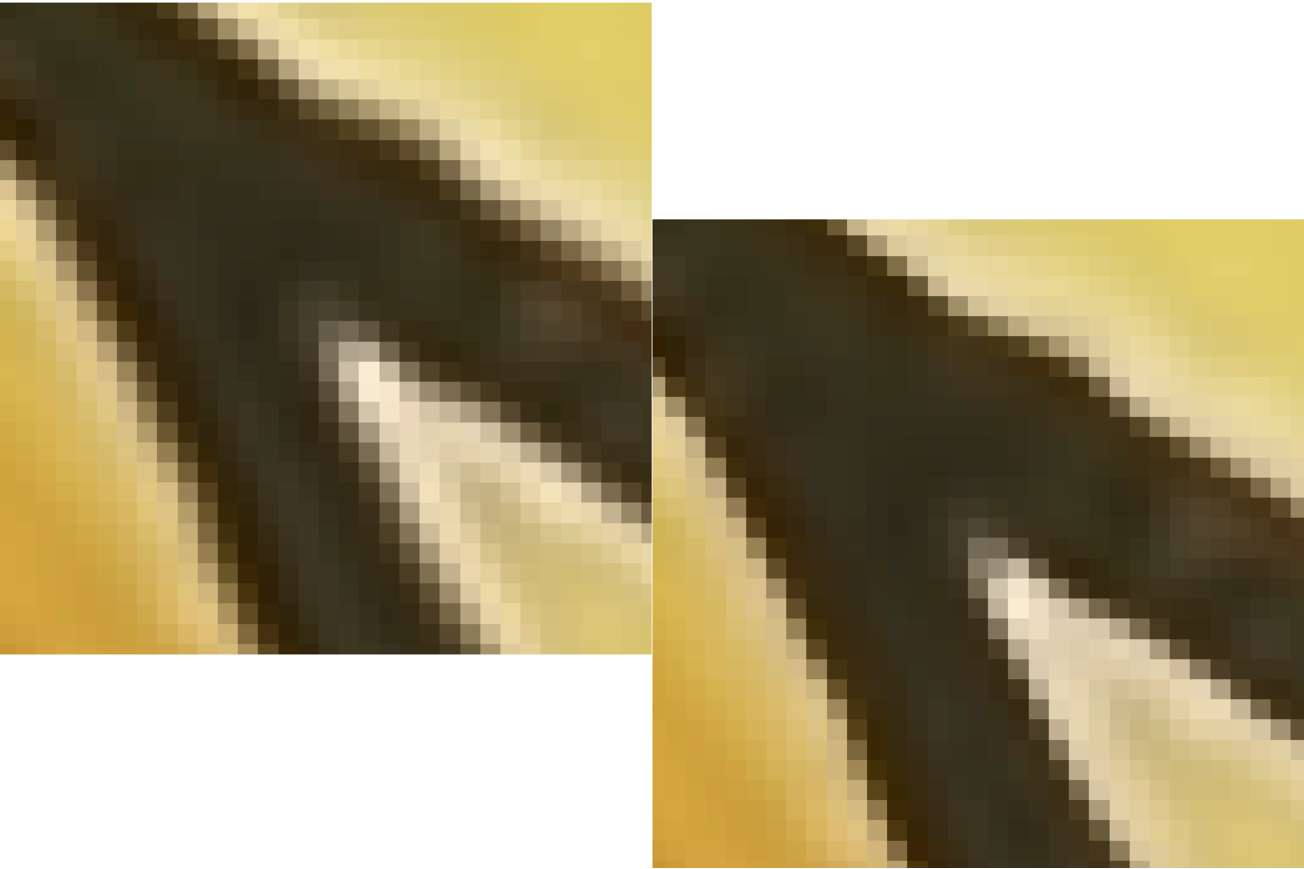Section: New Results
Rendering, inpainting and super-resolution
image-based rendering, inpainting, view synthesis, super-resolution
Video inpainting
Participants : Mounira Ebdelli, Christine Guillemot, Olivier Le Meur.
Image (and video) inpainting refers to the process of restoring missing or damaged areas in an image (or a video). This field of research has been very active over the past years, boosted by numerous applications: restoring images from scratches or text overlays, loss concealment in a context of impaired image transmission, object removal in a context of editing, disocclusion in image-based rendering of viewpoints different from those captured by the cameras. Inpainting is an ill-posed inverse problem: given observations, or known samples in a spatial (or spatio-tempoal) neighborhood, the goal is to estimate unknown samples of the region to be filled in. Many methods already exist for image inpainting, either based on PDE (Partial Derivative Equation)-based diffusion schemes, either using sparse or low rank priors or following texture synthesis principles exploiting statistical or self-similarity priors.
In 2014, the problem of video inpainting has been further addressed with free-moving cameras. The algorithm developed first compensates the camera motion between the current frame and its neighboring frames in a sliding window, using a new region-based homography computation which better respects the geometry of the scene compared to state-of-the-art methods. The source frame is first segmented into regions in order to find homogeneous regions. Then, the homography for mapping each region into the target frame is estimated. The overlapping of all aligned regions forms the registration of the source frame into the target one. Once the neighboring frames have been aligned, they form a stack of images from which the best candidate pixels are searched in order to replace the missing ones. The best candidate pixel is found by minimizing a cost function which combines two energy terms. One energy term, called the data term, captures how stationary is the background information after registration, hence enforcing temporal coherency. The second term aims at favoring spatial consistency and preventing incoherent seams, by computing the energy of the difference between each candidate pixel and its 4-neighboring pixels in the missing region. The minimization of the energy term is performed globally using Markov Random Fields and graph cuts. A method of Poisson blending has been implemented in order to further enhance the visual quality of the inpainted videos. The proposed approach, although less complex than state-of-the-art methods, provides more natural results.
Image and video super-resolution in the example-based framework
Participants : Marco Bevilacqua, Christine Guillemot, Aline Roumy.
Super-resolution (SR) refers to the problem of creating a high-resolution (HR) image, given one or multiple low-resolution (LR) images as input. The SR process aims at adding to the LR input(s) new plausible high frequency details, to a greater extent than traditional interpolation methods. We mostly focused on the single-image problem, where only a single LR image is available. We have adopted the example-based framework on one hand and the sparse approximation framework on the other hand.
In the example-based framework, the relation between the LR and HR image spaces is modeled with the help of pairs of small “examples”, i.e. texture patches. Each example pair consists of a LR patch and its HR version that also includes high-frequency details; the pairs of patches form a dictionary of patches. For each patch of the LR input image, one or several similar patches are found in the dictionary, by performing a nearest neighbor search. The corresponding HR patches in the dictionary are then combined to form a HR output patch; and finally all the reconstructed HR patches are re-assembled to build the superresolved image. In this procedure, one important aspect is how the dictionary of patches is built. At this regard, two choices are possible: an external dictionary, formed by sampling HR and LR patches from external training images; and an internal dictionary, where the LR/HR patch correspondences are learned by putting in relation directly the input image and scaled versions of it. The advantage of having an external dictionary is that it is built in advance: this leads to a reduction of the computational time, whereas in the internal case the dictionary is generated online at each run of the algorithm. However, external dictionaries have a considerable drawback: they are fixed and so non-adapted to the input image. To be able to satisfactorily process any input image, we need then to include in the dictionary a large variety of patch correspondences, leading to a high computational time. In 2013, external dictionaries have been designed to bridge the gap between external and internal dictionary based methods.
In 2014 instead, we proposed a novel SR method for internal dictionaries [16] . The internal dictionary contains pair of LR/HR patches taken from the image to be processed and is by construction well adapted to the data. However, its size is limited since it results from the sampling of a single image. This leads to an undersampling of the LR space and even more of the HR space. To overcome this problem, state of the art methods select, for each input LR patch, a local neighborhood, learn the local geometry of this neighborhood, and apply it in the HR domain. Therefore, an underlying hypothesis is that the local neighborhoods in the LR and HR domain are similar. To avoid this hypothesis, we employ a regression-based method to directly map LR input patches into their related HR output patches. To make this regression more robust, first the LR patches have been first oversampled (by a bicubic interpolation) such that LR and HR spaces have the same dimension, and second a Tikhonov regularization has been added. When compared to other state-of-the-art algorithms, our proposed algorithm shows the best performance, both in terms of objective metrics and subjective visual results. As for the former, it presents considerable gains in PSNR and SSIM values. When observing the super-resolved images, also, it turns out to be the most capable in producing fine artifact-free HR details.
Image super-resolution in a sparse and manifold learning framework
Participants : Julio Cesar Ferreira, Christine Guillemot, Olivier Le Meur, Elif Vural.
The problem of image super-resolution has also been addressed in a sparse approximation framework. This led to a novel algorithm based on sparse representations in which a structure tensor-based regularization has been introduced [29] . The relative discrepancy between the two eigenvalues of the structure tensor is an indicator of the degree of anisotropy of the gradient in a region of the image. The eigenvalues and eigenvectors of the structure tensor are used to compute, for each pixel belonging to a salient edge, a stream line in the direction perpendicular to the edge (given by the eigenvector corresponding to the highest eigenvalue of the structure tensor). The saliency of an edge is given by the S-norm of the highest eigenvalue. An energy term dealing with the sharpness of edges is then computed and used as a regularization constraint to modify the current estimated high resolution image inside the Iterative Shrinkage Thresholding algorithm. This extra constraint forces the value of the current pixel along the stream line to be as close as possible to pixel values having lowest saliency. The resulting single-image algorithm, called Sharper Edges based Adaptive Sparse Domain Selection (SE-ASDS) allows sharpening edges and reducing the ringing artefacts compared to existing methods. This is illustrated in Fig.3
|
In the previous method, the dictionaries used for the sparse approximation method are defined as a union of PCA basis learned on clusters of patches of the input image. The clusters are constructed using the classical k-means algorithm with patch distances computed with the Euclidean distance. This study is being pursued by assuming manifold models for the patches of the input images. A method using graph-based clustering has then been used for clustering patches on the manifold, and this method has been extended to cope with the out-of-sample problem. Dedicated dictionary learning methods are currently under development to have dictionaries best adapted to the manifold structure.




